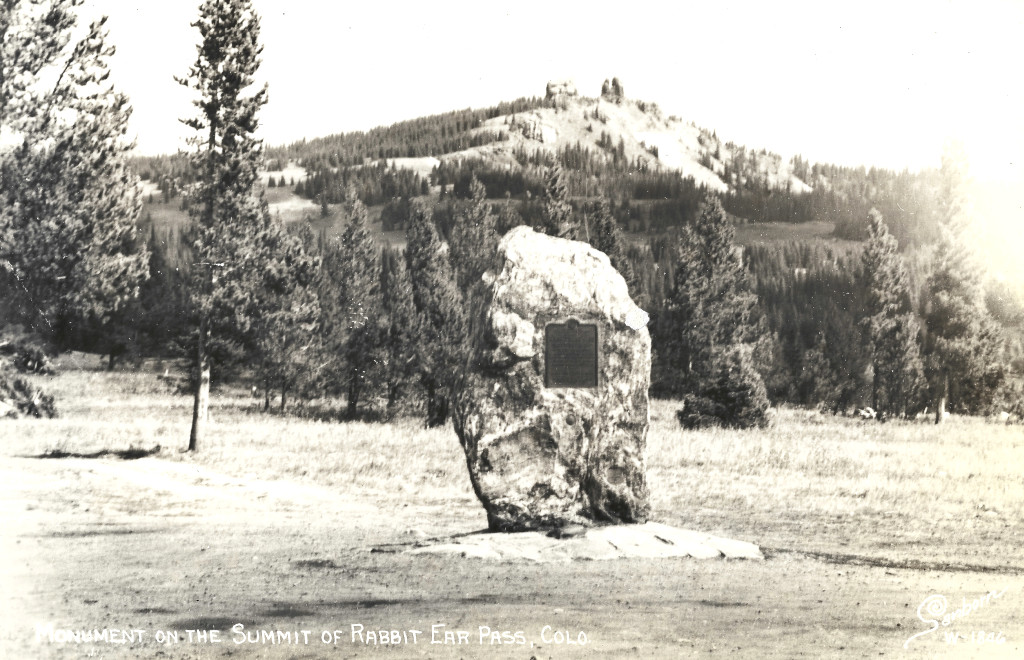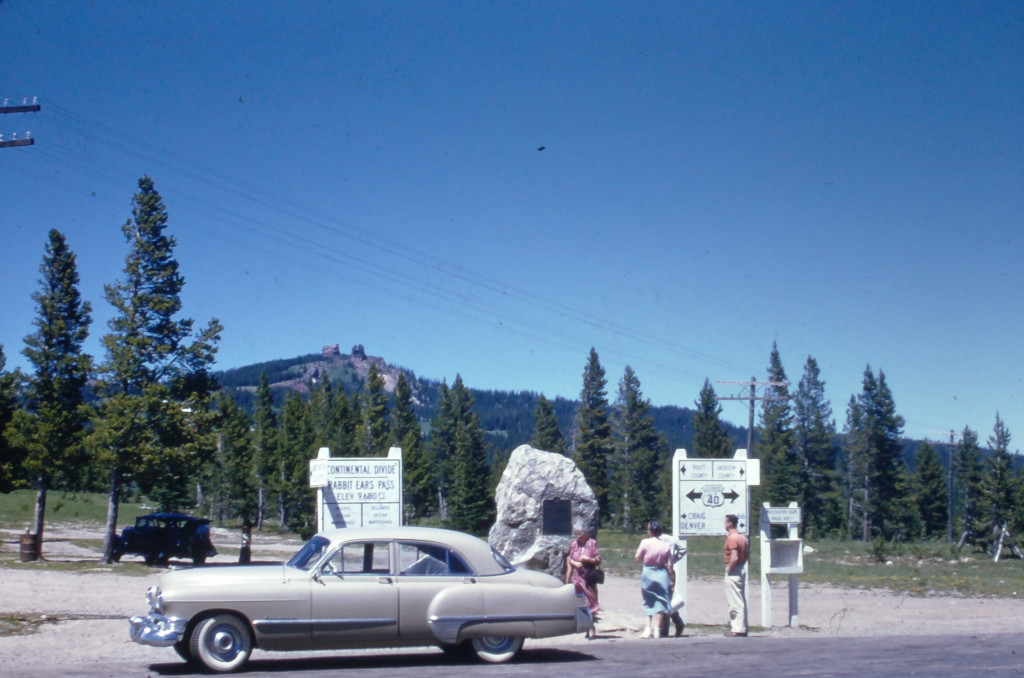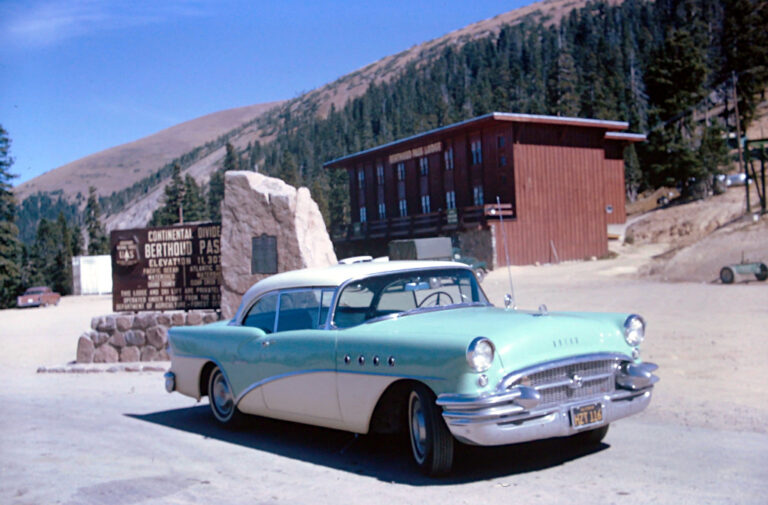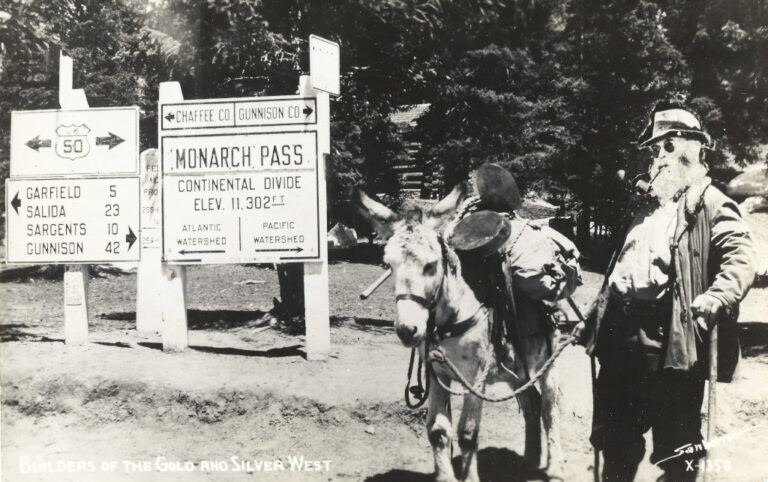Rabbit Ears Pass Continental Divide Historical Marker Postcard #CRA-W-846
<< Previous Image | Next Image >>
Brief Description
This image has been scanned from a Sanborn postcard that is held in the Coloradotopia archives. It shows the brass plaque that is mounted onto a large boulder on Rabbit Ears Pass. The Rabbit Ears formation can be seen in the distance.
Info
- Date: Circa 1930s-'40s
- Photographer: Harold Sanborn
- Medium: Real Photo Postcard
- Size: 5 3/8" x 3 1/2"
- ID: CRA-W-846
- Acquisition Date: February 2024
- Repository: Coloradotopia Archives
Scanned with basic cropping, no enhancements.
Image use restricted.
Image Dating Comments
This image was likely captured sometime during the 1930s or 1940s. This would have been after the stone marker was added here and before the Colorado State Highway Department added signs on each side of this marker.
Signs were added on Rabbit Ears Pass in the 1940s, but they were on the opposite side of the road and would not have been seen here.
The number W-1846 suggests this was not an early postcard from Sanborn’s career, which started in the 1920s. However, he was known to occasionally reuse earlier images for his later postcards.
Backside
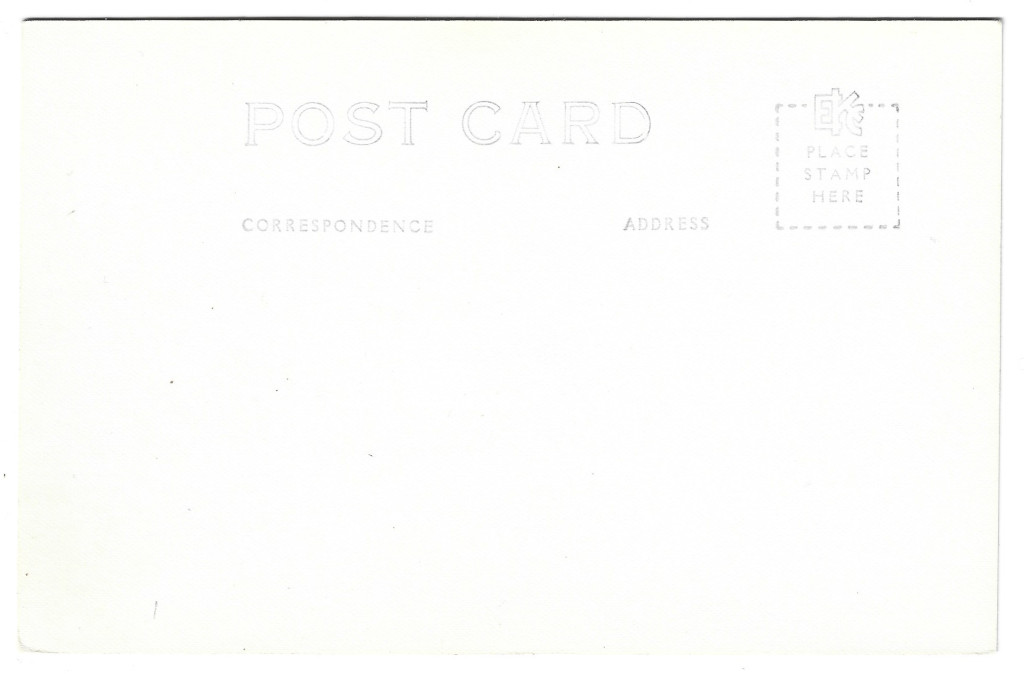
Full Scan
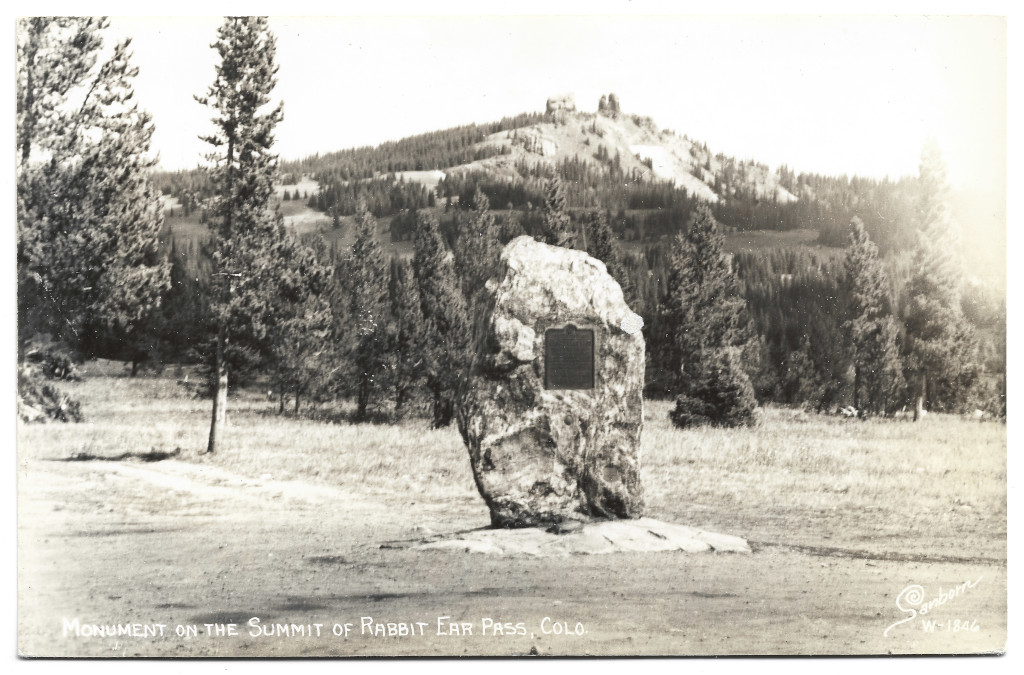
Comments & Discussion
This marker can still be seen in the same place today. At the time, this was the main route over Rabbit Ears Pass. It would eventually be paved, but now this is a dirt road that is located to the north of the modern highway.
Condition, Aging & Authenticity: The backside only has a small hint of overall darkening due to age. The surface gloss has not deteriorated at all upon this postcard’s arrival into the archive. The loss of detail in the upper right is due to overexposure that can also be seen in other examples of this postcard. This postcard has a spec of junk on it, located over the upper right of the stone monument.
<< Previous Image | Next Image >>
About the Coloradotopia Archives Collection. The Coloradotopia archives hold a large collection of historical images and items that document Colorado’s automobile history in the mountains. You can read more about the collection here.

